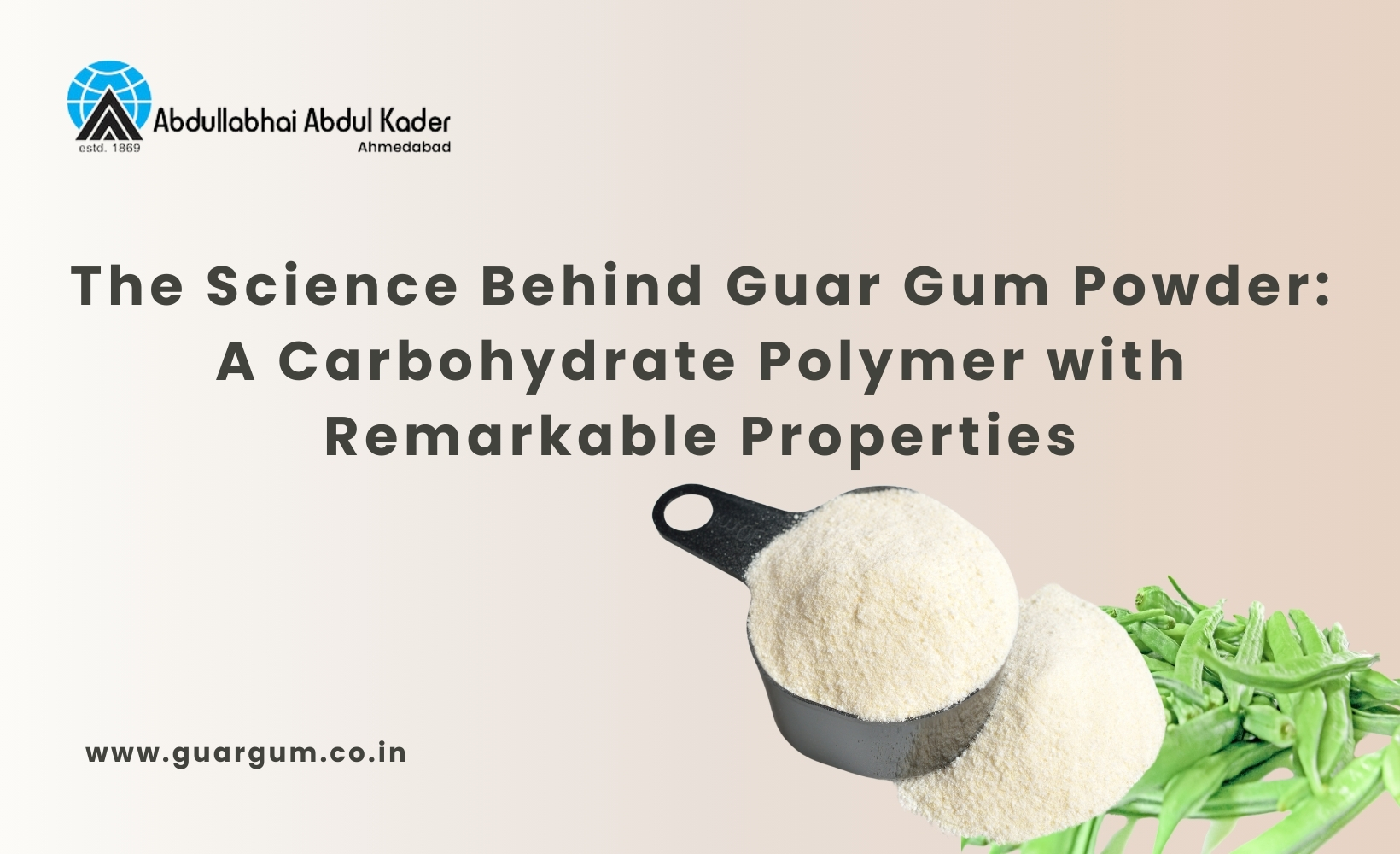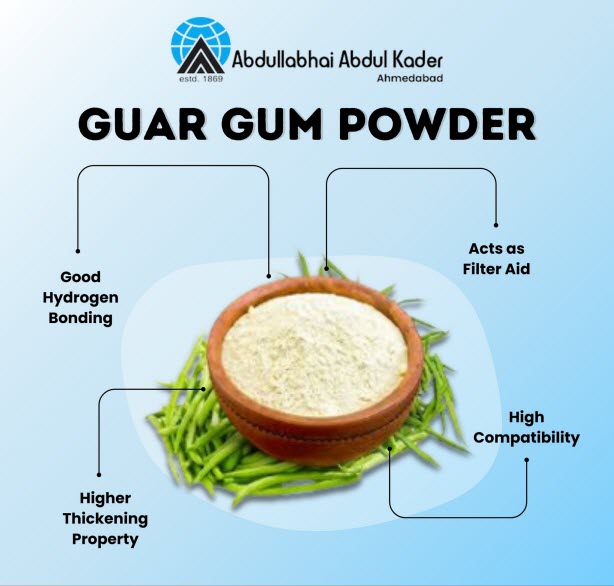
Guar gum powder is a natural carbohydrate polymer derived from the endosperm of guar beans. This polysaccharide is known for its exceptional water-binding, thickening and stabilizing properties, making it valuable across multiple industrial applications. It consists mainly of galactomannan, a compound composed of mannose and galactose sugars arranged in a specific molecular structure.
Beyond its common uses, the scientific characteristics of guar gum powder - such as its solubility, viscosity control and interaction with other compounds - set it apart as an essential component in industrial formulations, its composition, molecular structure and functional properties is key to recognizing its significance in various applications.
This article delves into the scientific composition, physical and chemical properties and functional characteristics of guar gum powder, providing insights into its role as a powerful carbohydrate polymer.
Molecular Composition and Chemical Structure of Guar Gum Powder
Primary Components of Guar Gum Powder
The efficiency of guar gum powder is directly linked to its chemical composition, which includes:
- Hydrocolloids (23%) - Responsible for thickening and gelling properties.
- Fats (40%) - Enhance viscosity and emulsification.
- Proteins (34%) - Improve stability and texture in food products.
Galactomannan Polysaccharide Structure
At a molecular level, guar gum powder is classified as a galactomannan polysaccharide, consisting of:
- Mannose Backbone: Forms the primary chain, responsible for solubility and structure.
- Galactose Side Chains: Linked to mannose units, providing hydrogen bonding capabilities and enhancing water retention.
This unique structure allows guar gum powder to function as an effective thickening, emulsifying and gelling agent in different formulations.

Physical and Chemical Properties
Water Solubility and Hydration Behaviour
- Guar gum powder dissolves easily in cold and hot water, forming highly viscous solutions.
- It remains insoluble in organic solvents, ensuring stability in formulations where water-based solutions are required.
- The rate of hydration depends on temperature, pH and ionic strength, making it adaptable to diverse conditions.
Viscosity Control and Gel Formation
- Exhibits high viscosity at low concentrations, outperforming many synthetic and natural thickeners.
- Can form stable gels in combination with other hydrocolloids, making it suitable for controlled viscosity applications.
- The viscosity level of guar gum powder is influenced by pH balance, salt content and mixing conditions.
Binding and Film-Forming Properties
- Due to its strong hydrogen bonding abilities, guar gum powder acts as a highly effective binder in various formulations.
- Creates protective films when combined with other stabilizers, enhancing durability and moisture retention.
Factors Influencing the Performance of Guar Gum Powder
pH and Ionic Sensitivity
- Functions effectively in neutral pH (6-7) but shows varied solubility in highly acidic or alkaline conditions.
- The presence of salts and electrolytes affects gel strength and viscosity, altering performance in industrial formulations.
Temperature Effects on Hydration
- Hydration rate increases with temperature, leading to quicker viscosity development.
- High temperatures may cause partial degradation, reducing viscosity over extended periods.
Compatibility with Other Polymers
- Guar gum powder interacts well with proteins, starches and synthetic polymers, expanding its functional range.
- Can be combined with other hydrocolloids, such as xanthan gum and locust bean gum, to modify texture and consistency.
Quality Standards and Classification of Guar Gum Powder
Grading and Purity Levels
The classification of guar gum powder is based on moisture content, viscosity and granulation size. The primary grades include:
- Technical Grade: Used in industrial applications requiring moderate viscosity and purity.
- Refined Grade: Offers higher purity, often used where precise viscosity control is needed.
- High-Viscosity Grade: Designed for applications requiring maximum thickening efficiency.
Key Specification Parameters
|
Property |
Standard Range |
|
Moisture Content |
Less than 12% |
|
Gum Content |
More than 80% |
|
pH Level |
6 - 7 |
|
Heavy Metals |
Less than 20 PPM |
|
Viscosity (24 Hrs) |
More than 5500 CPS |
Storage and Stability Considerations
Proper Storage Conditions
- Should be stored in a dry, cool environment to prevent moisture absorption.
- Packaging must be airtight to maintain powder stability and prevent degradation.
- Temperature fluctuations should be minimized to maintain viscosity levels.
Shelf Life and Degradation Factors
- Under optimal storage, guar gum powder retains its properties for up to 24 months.
- Exposure to humidity and direct sunlight can lead to reduced hydration efficiency.
Global Market and Bulk Supply Chain
Production and Global Demand
- India is the largest producer of guar gum powder, supplying bulk volumes for industrial applications.
- Guar gum powder supplier networks ensure efficient distribution to Europe, North America and Asia.
Bulk Sourcing and Wholesale Distribution
- Guar gum bulk is widely traded in various grades, ensuring industries can select the right viscosity and composition.
- Guar gum Leading exporters focus on quality control and consistency, meeting global industry requirements.
Conclusion
The scientific foundation of guar gum powder lies in its complex carbohydrate polymer structure, which enables exceptional viscosity, binding and hydration properties. Its unique galactomannan composition makes it a vital component in industrial formulations, where precise thickening and stabilizing capabilities are required.
With ongoing advancements in processing and refinement, guar gum powder continues to play a significant role in high-performance material applications. Whether sourced in bulk or customized formulations, it remains one of the most efficient carbohydrate polymers available for industrial use.




